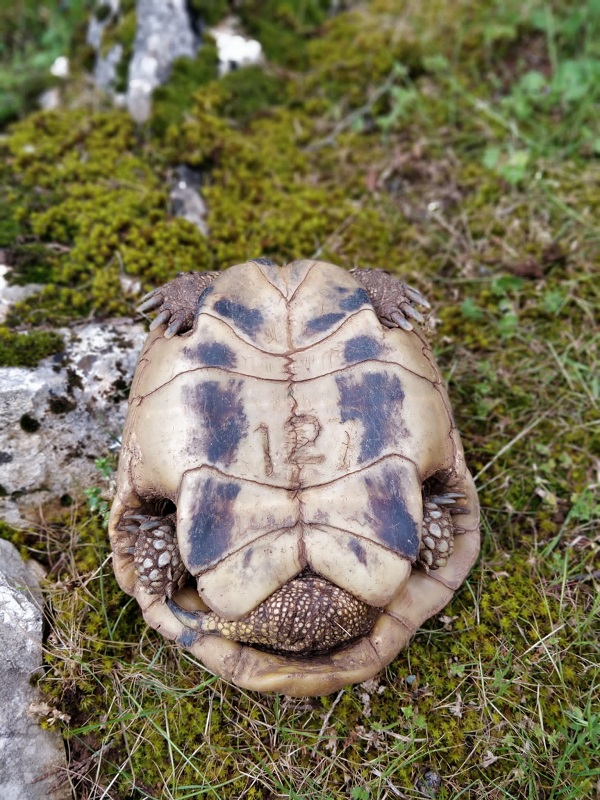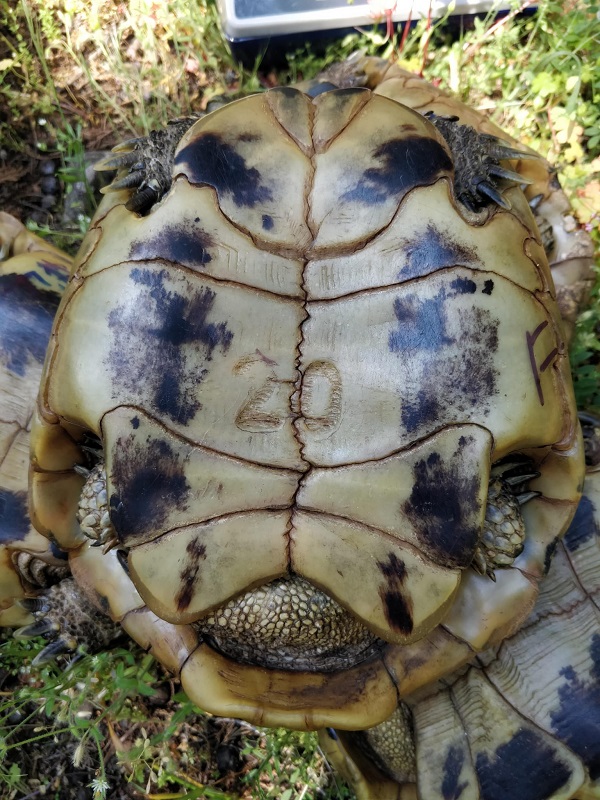Do you know more about this phenomenon? Read the article below and report any tortoise markings you may have noticed in the Prespa region or its surroundings.

Golem Grad Island in Lake Prespa represents a unique natural environment in our country, where numerous living species and their habitats are interwoven with traces of past human presence over the millennia. Among the most striking permanent residents of the island are undoubtedly the Hermann’s tortoises. Due to the island’s isolation, they have developed unique adaptations in their behavior and way of life – which, in turn, has attracted the attention of the global scientific community.
During our regular field studies of this population, we have observed that the oldest tortoises on the island bear engraved numerical markings on the lower part of their shell, known as the plastron. These markings appear to suggest some form of counting or identification, yet they do not match any contemporary method used by biologists who have been conducting population studies in the region for decades.

So far, attempts to trace the origin of these markings through conversations with local residents and consultations with colleagues have yielded no definitive answers. The engraved numbers do not appear recent and likely date back a long time (at least 30, but possibly more than 50 to 70 years). The mystery remains – could this be evidence of earlier scientific activity, or perhaps informal monitoring of Golem Grad’s tortoise population by amateur biologists or other individuals?
In any case, they bear witness to a long-standing – even historic – human fascination with the island’s wildlife. Golem Grad hosts one of the densest and most unusual populations of Hermann’s tortoises in the world, which today faces significant survival challenges – primarily due to an imbalanced sex ratio among individuals, compounded by the growing negative effects of climate change. Only through collaborative scientific research, based on a clearly defined methodology, can we hope to identify possible conservation measures for the Hermann’s tortoises and other living species on this truly unique island in the heart of Prespa.

